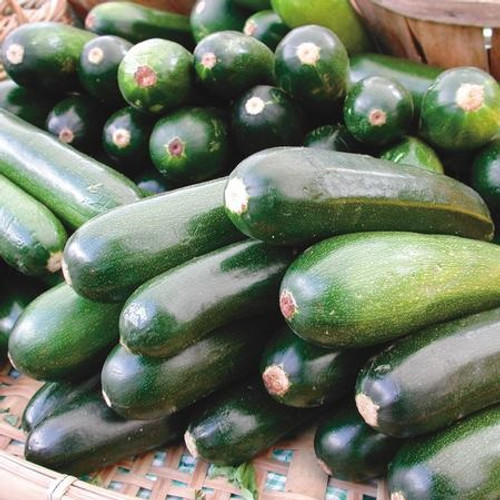Sunburst is a deep yellow scallopini that is as vibrant as the sun. Delicious as it is colorful, it’s the earliest and most productive of the yellow scallopini. Vigorous 3 foot bush habit. Can be picked from baby size up to 6–8 inches across without losing its tender, buttery flavor. Only your imagination limits the ways to serve Sunburst!
Soil Temp for Germ 65–85°F
Seed Depth 1–1 ½"
Seed Spacing 3–4/hill
Days to Emergence 5–10
Thin Plants to 1–2/hill
Row Spacing 3–6'
Fertilizer Needs Medium
Minimum Germination 75%
Seeds per Gram See below
Seed Life 3–4 years
Cucurbita spp. In the diverse family of squash are true nutritional powerhouses, encompassing a wide array of forms, flavors, colorations, and culinary applications. Squash are rich in the carotenoids necessary for vitamin A production and boast a wide complement of amino acids. While starchy, most of the carbohydrates in the fruit come from special polysaccharides, pectins, which have exhibited strong antioxidant, anti-inflammatory, and anti-diabetic, insulin-regulating properties.
Days to maturity are from date of direct seeding.
Culture
• Fertile, well-drained soil gives best results
• Squash is a warm season crop, avoid planting too early; raised beds and plastic mulch help keep roots warm
• Squash are monoecious (bearing separate male and female flowers on the same plant) and require insect pollination
• Poor fruit set is often the result of inadequate pollination; plant bee attractant flowers
Direct Sowing
• Plant after frost danger when soil warms to 65°F
• Work in shovelful of compost and 1/2 cup TSC's Complete fertilizer into hill
• Keep soil evenly moist but not wet as too much moisture causes seed to rot
• Bush varieties: sow 3-4 feet apart
• Vining varieties: sow 4-6 feet apart
Transplanting
• Start indoors 3-4 weeks prior to anticipated transplant date in 4 inch pots
• Work in shovelful of compost and 1/2 cup TSC's Complete fertilizer into hill
• Transplant carefully as to not disturb roots
Insects & Diseases
• Common insects: Spotted and striped cucumber beetles, vine borers and squash bugs
• Insect control: Row covers and/or apply Pyrethrin
• Moschata species are resistant to vine borer
• Common diseases: See chart below; diseases vary by region
• Disease prevention: 3-4 year crop rotation, and fungicide applications
Harvest & Storage
• Summer squash: Harvest regularly when fruits are young to keep plants productive
• Winter squash: Leave on vine until fully mature, rinds should be firm
• When winter squash is mature cut stem leaving 2-4 inches remaining, gently wash in sanitizing solution; 10 parts water to 1 part bleach
• For best results move winter squash to a warm dry area 80-90°F to cure; see each type (below) for curing requirements
• Store winter squash at 50-60°F with 50-75% relative humidity and good air circulation
Curing Requirements
• Acorn: Curing not required; Stores 2-3 months
• Buttercup: Cure 10-14 days; Store 1-2 months for best flavor; Will keep 4-6 months
• Butternut: Cure 10-14 days; Store 1-2 months for best flavor; Will keep 4-6 months
• Delicata: Curing not required; Stores 2-3 months
• Hubbard: Cure 10-14 days; Store 1-2 months for best flavor; Will keep 4-6 months
• Kabocha: Cure 10–14 days; Store 1–2 months for best flavor; Will keep 4–6 months
• Mini-Hubbard: Curing not required; Stores 2-3 months
• Spaghetti: Curing not required; Stores 2-3 months
Seeds per gram
• Acorn, Butternut, & Delicata: 9-16
• Buttercup & Hubbard: 3-7
• Green Summer: 4-11
• Kabocha: 5–7
• Spaghetti: 4-7
• Patty Pan: 7-10
• Yellow Summer: 7-15
• Zucchini: 5-8
KEY TO SQUASH DISEASE RESISTANCE AND TOLERANCE
HR indicates high resistance.
IR indicates intermediate resistance.
CMV | Cucumber Mosaic Virus
PM | Powdery Mildew
PRV | Papaya Ringspot Virus
WMV* | Watermelon Mosaic Virus
ZYMV | Zucchini Yellow Mosaic Virus
* Numbers indicate specific disease race.










